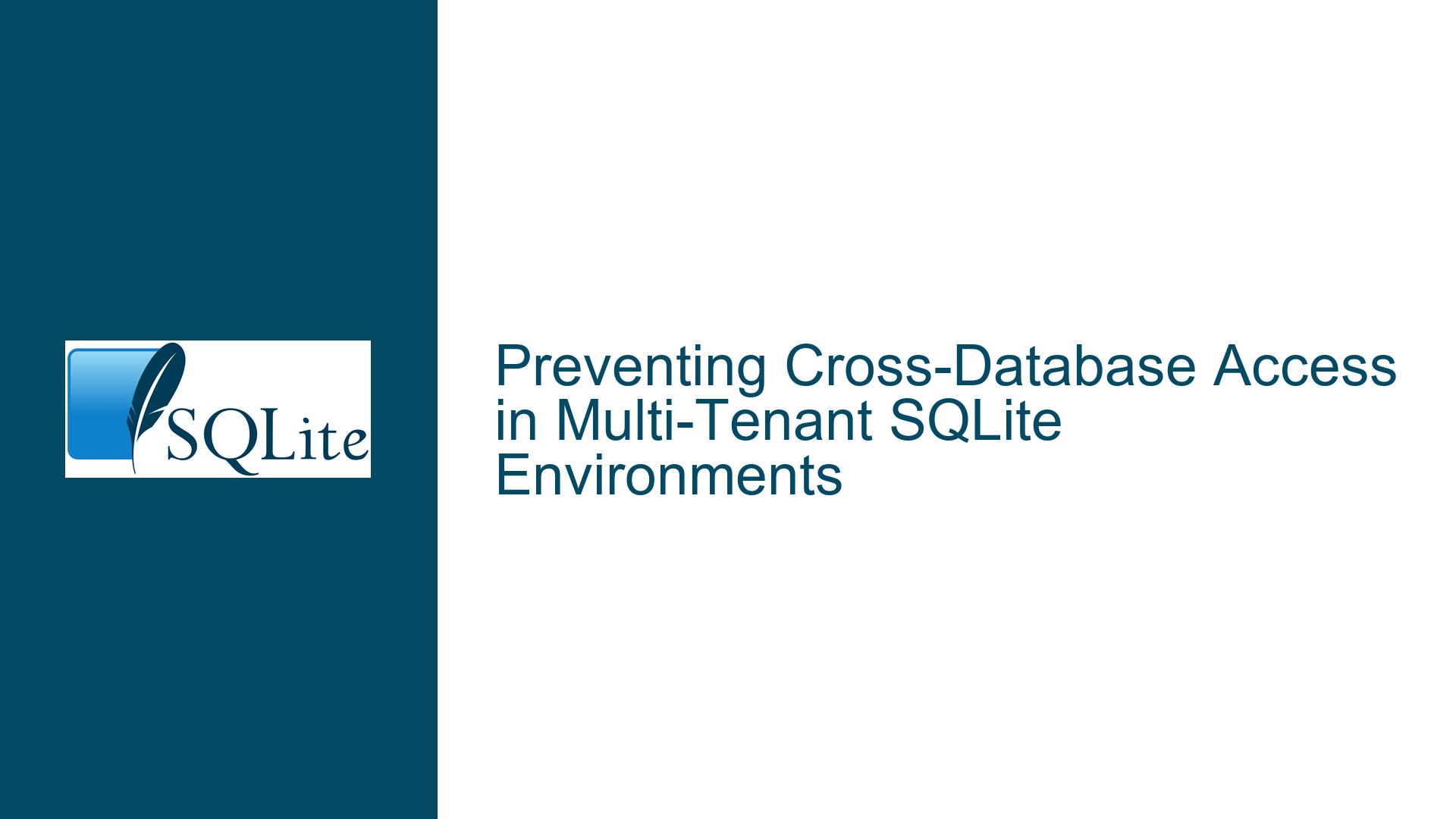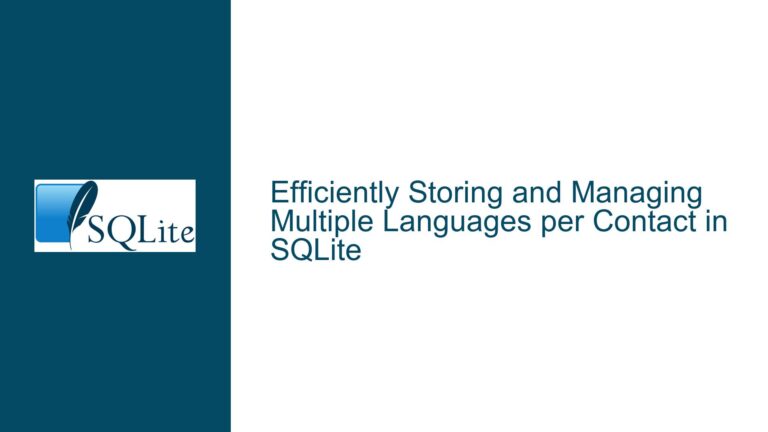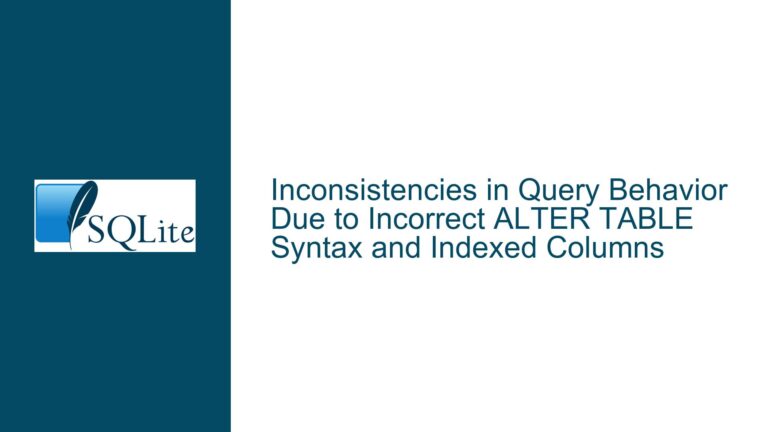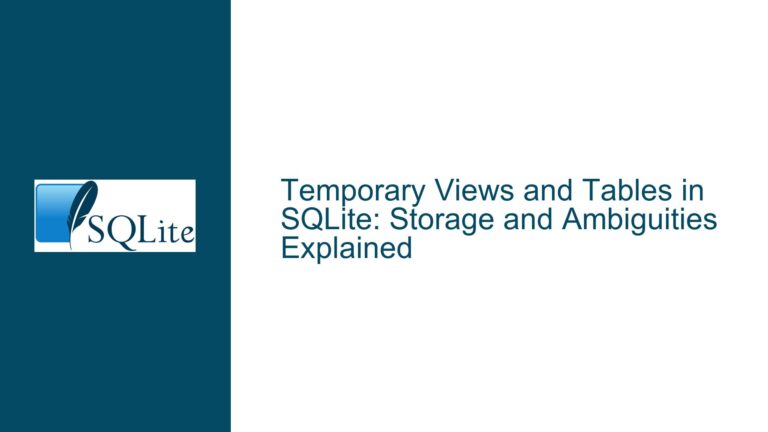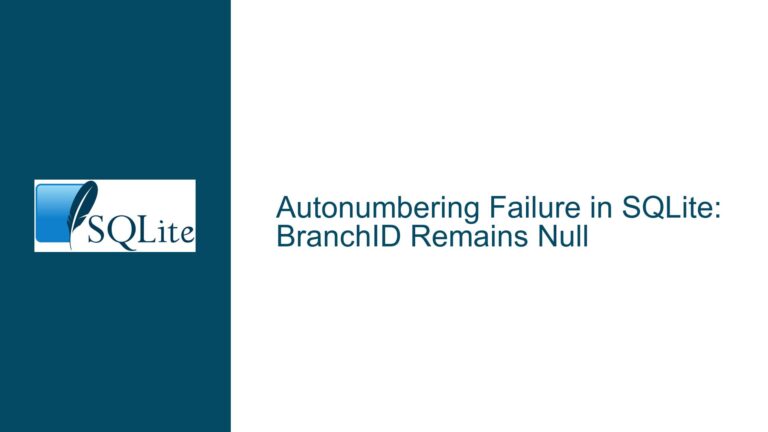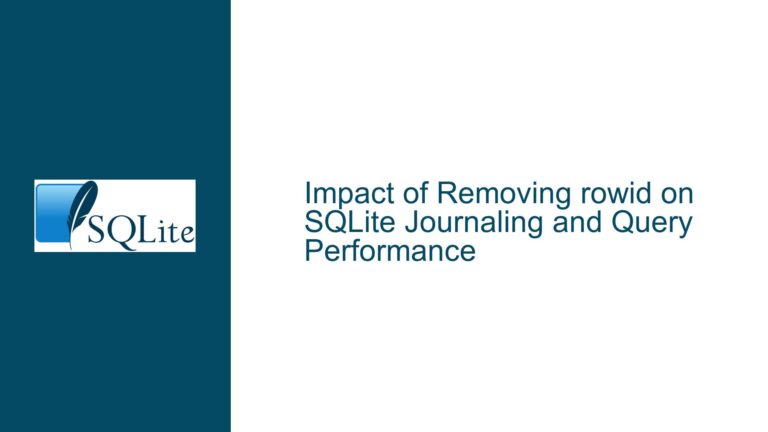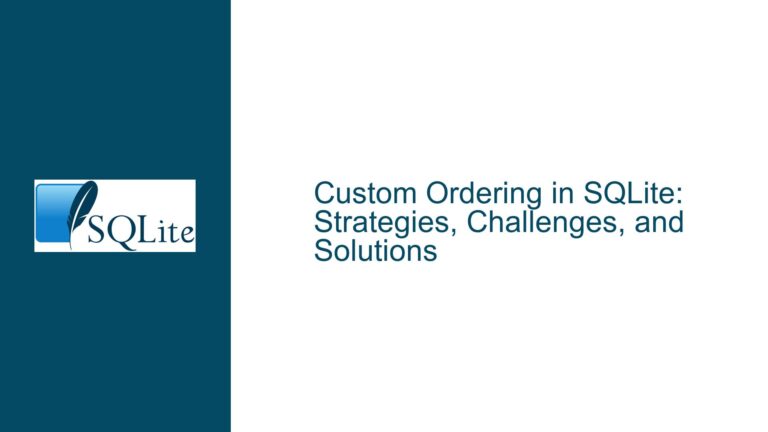Preventing Cross-Database Access in Multi-Tenant SQLite Environments
Understanding the Risks of Cross-Database Access in SQLite
When deploying SQLite in a multi-tenant environment, where multiple users or applications share the same server but require isolated database instances, the primary concern is ensuring that one tenant cannot access or modify another tenant’s data. SQLite, by design, is a serverless database engine that operates on a file-per-database basis. This simplicity is one of its strengths but also introduces unique challenges in multi-tenant scenarios.
The core issue arises from SQLite’s ATTACH DATABASE feature, which allows a database connection to attach another database file to its current session. This feature is incredibly useful in single-user or controlled environments but becomes a significant security risk in multi-tenant setups. For example, if database1.sqlite and database2.sqlite reside in the same directory, a user with access to database2.sqlite could potentially attach database1.sqlite and perform unauthorized operations on it.
Beyond ATTACH DATABASE, other risks include direct file system access, where a user with sufficient permissions could manipulate database files directly, and resource contention, where one tenant’s operations could impact the performance or stability of another tenant’s database.
Exploring the Root Causes of Cross-Database Access Vulnerabilities
The vulnerability to cross-database access in SQLite stems from several factors. First, SQLite’s file-based architecture means that database files are just like any other files on the system, subject to the same permissions and access controls. If the file system permissions are not configured correctly, or if the application accessing the database has broad permissions, it becomes trivial for one tenant to access another tenant’s database.
Second, SQLite’s ATTACH DATABASE command does not inherently restrict which databases can be attached. This lack of restriction is by design, as SQLite assumes that the environment in which it operates is controlled and that all users have legitimate access to all databases they might attach. In a multi-tenant environment, this assumption does not hold, leading to potential security breaches.
Third, SQLite does not provide built-in user authentication or access control mechanisms. Unlike some other database systems that allow you to define users and roles with specific permissions, SQLite relies entirely on the underlying file system for access control. This means that any security measures must be implemented at the application or operating system level, rather than within SQLite itself.
Comprehensive Strategies to Mitigate Cross-Database Access Risks
To effectively mitigate the risks of cross-database access in a multi-tenant SQLite environment, a multi-layered approach is necessary. This approach should include both SQLite-specific configurations and broader system-level security measures.
1. Leveraging SQLite’s Authorization Mechanism
SQLite provides a powerful but often overlooked feature called the authorizer callback. This callback function can be used to intercept and control access to various database operations, including the ATTACH DATABASE command. By implementing an authorizer, you can programmatically deny attempts to attach unauthorized databases.
The authorizer callback is set using the sqlite3_set_authorizer function, which allows you to specify a custom function that SQLite will call before executing certain operations. Within this function, you can inspect the operation being attempted and return SQLITE_DENY to prevent it or SQLITE_OK to allow it.
For example, you could implement an authorizer that checks the database file being attached and denies the operation if it does not match a predefined list of allowed databases. This approach requires careful management of the list of allowed databases and may involve maintaining a mapping between tenants and their respective database files.
2. Configuring SQLite’s Defensive and Limit Settings
SQLite offers several configuration options that can help enhance security in a multi-tenant environment. Two particularly relevant options are SQLITE_DBCONFIG_DEFENSIVE and SQLITE_LIMIT_ATTACHED.
The SQLITE_DBCONFIG_DEFENSIVE flag, when enabled, prevents certain potentially dangerous operations, such as modifying the database schema in ways that could corrupt the database. This flag is useful for preventing accidental or malicious schema changes that could impact database integrity.
The SQLITE_LIMIT_ATTACHED setting allows you to limit the number of databases that can be attached to a single connection. By setting this limit to 0, you can effectively disable the ATTACH DATABASE command altogether, eliminating the risk of cross-database access through this mechanism.
3. Implementing File System-Level Isolation
While SQLite-specific measures are crucial, they must be complemented by robust file system-level isolation. This involves ensuring that each tenant’s database files are stored in directories with strict access controls, preventing unauthorized users or processes from accessing them.
One effective strategy is to use operating system features such as Access Control Lists (ACLs) to restrict access to database files. For example, you could configure the file system so that only the user account under which the web server runs has read and write permissions for the database files, while other users have no access.
In environments where multiple tenants are served by a single web server process, you can use techniques such as bind mounts or namespaces to create isolated views of the file system for each tenant. This ensures that even if a tenant’s application attempts to access another tenant’s database file, the operating system will prevent it due to the isolation provided by the mount or namespace.
4. Containerization for Enhanced Isolation
For the highest level of isolation, consider using containerization technologies such as Docker, Podman, or LXD. Containers provide a lightweight, isolated environment for running applications, including SQLite databases. By running each tenant’s database in a separate container, you can ensure that they have no access to each other’s files or resources.
Containerization also offers additional benefits, such as resource limits and easy scalability. You can configure each container with specific CPU and memory limits, preventing one tenant from monopolizing system resources. Additionally, containers can be easily replicated and distributed across multiple servers, allowing you to scale your multi-tenant environment as needed.
5. Randomizing Database File Names and Paths
Another layer of security can be added by randomizing the names and paths of database files. Instead of using predictable names such as database1.sqlite and database2.sqlite, generate random strings for both the directory and file names. This makes it more difficult for an attacker to guess the location of another tenant’s database, even if they manage to bypass other security measures.
For example, instead of storing a tenant’s database at /var/db/tenant1/database.sqlite, you could store it at /var/db/a1b2c3d4/e5f6g7h8.sqlite. The mapping between tenants and their database paths would be maintained by your application, ensuring that each tenant can only access their own database.
6. Monitoring and Auditing Database Access
Finally, implement robust monitoring and auditing mechanisms to track access to database files and detect any unauthorized attempts. This can be achieved through a combination of SQLite’s built-in logging features, operating system audit logs, and custom application-level logging.
By regularly reviewing these logs, you can identify suspicious activity and take corrective action before a security breach occurs. Additionally, auditing can help you demonstrate compliance with security standards and regulations, which may be required depending on your industry and the nature of the data you are handling.
Conclusion
Securing a multi-tenant SQLite environment requires a comprehensive approach that addresses both SQLite-specific vulnerabilities and broader system-level security concerns. By leveraging SQLite’s authorization mechanism, configuring defensive settings, implementing file system-level isolation, and considering containerization, you can significantly reduce the risk of cross-database access and ensure that each tenant’s data remains secure.
Additionally, randomizing database file names and paths, along with robust monitoring and auditing, provides further layers of protection. While no system can be entirely immune to security threats, these strategies will help you build a resilient and secure multi-tenant SQLite environment that meets the needs of your users while safeguarding their data.
